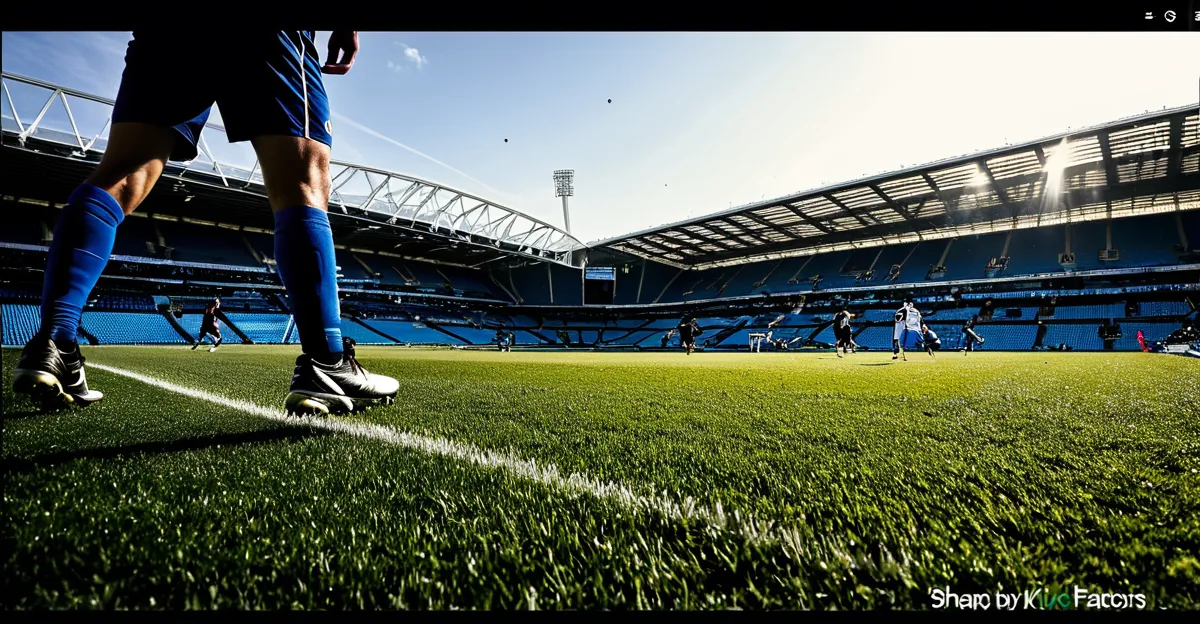Core sociocultural influences on UK sports popularity
Understanding the sociocultural factors behind the popularity of sports in the UK requires exploring how tradition, heritage, and class deeply shape preferences. Sports like football, rugby, and cricket have long-standing ties to specific social classes and regions, reinforcing their appeal through established cultural narratives. For example, cricket has historically been associated with affluent communities and southern England, while football emerged from working-class urban areas in the north. This class-based division in UK sports culture has influenced not only which sports people follow but also how they engage with them.
Family, schools, and local clubs play pivotal roles in fostering community engagement with sports from an early age. Many young people’s first exposure to sports comes through school programs or youth clubs, which embed sports into local culture. Parents often pass down their interests, reinforcing loyalty to certain sports within families. Local clubs serve as social hubs, linking sports participation with community identity. This grassroots level participation is essential in sustaining sports popularity and maintaining traditions within UK sports culture.
Also read : The Journey of British Athletes: How Did They Reach the Top?
National identity and regional rivalries further intensify engagement and loyalty. Sporting events often become expressions of local pride, where winning against historical rivals can carry symbolic weight. These dynamics are especially visible in football derbies or rugby matches between regions. The connection between sport and identity strengthens overall enthusiasm and creates vibrant, passionate fan cultures across the UK. Such sociocultural factors are fundamental in understanding why certain sports hold enduring popularity and how they continue to unite communities throughout the nation.
Economic factors driving sports popularity
Economic factors play a crucial role in shaping the popularity of sports across the UK. One primary influence is sports funding, which comes from a mix of government support, corporate sponsorship, and broadcaster investments. These financial injections enable clubs and organizations to improve facilities, train athletes, and stage high-profile events that draw larger crowds and media attention. Without adequate funding, participation levels and spectator interest can decline.
Additional reading : The Journey of British Athletes: How Did They Reach the Top?
Ticket sales constitute a significant revenue stream and reflect the economic accessibility of sports. Events with affordable pricing tend to attract more diverse audiences, enhancing community engagement and fostering sustained interest. Conversely, high costs can create barriers, limiting attendance and participation to more affluent demographics. This dynamic affects the overall landscape of UK sports culture by shaping who can practically engage with different sports, either as fans or participants.
Additionally, the growth of sports tourism and merchandise sales contributes notably to the economic impact of sports. Large-scale tournaments attract visitors from across the UK and abroad, boosting local economies and promoting regional pride. Merchandise allows fans to express their loyalty while providing financial support to teams and leagues. Together, these aspects underscore how economic realities intersect with cultural enthusiasm, driving the ongoing popularity and visibility of sports throughout the country.
Historical context and evolution of popular UK sports
Understanding the sports history UK provides essential insight into why football, rugby, and cricket have become cornerstones of national culture. Football originated in the mid-19th century as a formalized set of rules emerged from various regional games. This transition from informal play to organized competition spurred mass appeal, especially within working-class communities. Over time, football grew into a professional sport, aligning with urban industrial centres, which further boosted its popularity.
Cricket’s origins go back several centuries and are deeply rooted in rural and aristocratic traditions. Its association with southern England and more affluent social strata reflects a different trajectory compared to football. Initially, cricket embodied leisure and gentlemanly conduct before expanding through county clubs and national competitions. The sport’s enduring presence in UK sports culture is connected to this historical alignment with class and geography.
Rugby also shares historical ties to educational institutions, particularly private schools, where it was codified. It split into rugby union and rugby league, with each style developing unique followings reflecting class and regional identities. These shifts illustrate evolving sports trends and how changing social structures influence popularity.
Changes in society have caused noticeable shifts in which sports draw attention. For example, football’s rise was tied to industrialisation and urban growth, while cricket’s prominence has fluctuated as social attitudes and leisure habits have evolved. Today, these sports compete amid new interests and formats, adapting to contemporary audiences and media landscapes while maintaining strong historical roots.
The impact of media and technology on sports trends
Media and technology have transformed sports media UK, reshaping how audiences consume and engage with sports. The rise of televised sports brought games into living rooms nationwide, expanding reach beyond traditional stadium attendance. More recently, streaming platforms have accelerated this trend, offering flexible, on-demand access to matches and events. This shift caters to diverse schedules and increases digital sports consumption, making sports more accessible than ever.
Social media plays a pivotal role in enhancing fan interaction and community building. Platforms like Twitter and Instagram enable real-time updates, player insights, and fan discussions, creating a continuous, immersive experience. This dynamic engagement boosts loyalty and broadens interest across different demographics. Fans share moments and opinions instantly, which amplifies the cultural impact of sports.
However, coverage disparities persist between major and minor sports. Prominent sports such as football receive extensive media attention, while lesser-known sports struggle for visibility. This imbalance can limit awareness and participation in these sports, affecting their growth potential within the UK. Nonetheless, digital innovations offer opportunities for niche sports to reach targeted audiences and develop fan bases.
In summary, advances in broadcasting and digital platforms continue to drive changes in sports media UK, promoting wider community engagement and evolving consumption habits. This ongoing evolution helps shape which sports capture public attention and defines how fans connect with their favourite games.
Demographic trends shaping the UK sports landscape
Demographic shifts significantly influence UK sports culture, affecting which activities resonate with different groups. Age emerges as a key factor: younger populations tend to favour fast-paced, accessible sports, driving youth participation in disciplines like football and emerging formats such as futsal or street basketball. Older demographics often prefer traditional sports or leisure activities, highlighting diverse preferences within the overall landscape.
Gender diversity in sport is increasingly prominent. Efforts to promote women’s involvement across various sports have expanded access and visibility, reshaping traditional boundaries. This shift challenges long-standing gender norms in UK sports and reflects broader societal changes toward inclusion. Female participation growth is particularly notable in football, rugby, and athletics, contributing to evolving community engagement and fan bases.
Ethnic diversity also shapes sporting interests. Urban areas with multicultural populations showcase a wider range of sports preferences, including cricket, boxing, and basketball, reflecting cultural heritage and local influences. This diversity enriches UK sports culture, fostering cross-community connections and broadening participation.
Urbanisation and changing lifestyles further affect sports trends. Increased city living often leads to a preference for flexible, time-efficient sports and activities that fit busy schedules. This has encouraged growth in casual and recreational sports, supported by local clubs and schools adapting programs to meet these needs.
To increase inclusivity, many initiatives target breaking down barriers related to cost, location, and social attitudes. These programs emphasize making sports accessible to all demographics, enhancing overall participation and social cohesion. As demographic trends continue evolving, their influence on UK sports culture will remain a dynamic and critical factor.
The role of international influence and globalisation
International sports and globalisation significantly shape UK sports culture, introducing new dynamics that expand and diversify traditional interests. Major international tournaments, such as the FIFA World Cup and the Olympics, capture widespread attention, elevating the profile of sports beyond national boundaries. These events expose UK audiences to global talent and styles, intensifying enthusiasm and participation domestically.
Foreign athletes competing in UK leagues, especially in football and rugby, contribute to this global influence. Their presence not only raises the competitive standard but also increases fan engagement by attracting diverse communities linked to these players’ home countries. This exchange fosters richer community engagement and broadens the cultural fabric of UK sports.
Moreover, the adoption of international sports trends drives innovation and adaptation within UK sporting formats. For example, the popularity of Twenty20 cricket and basketball reflects global influences tailored to local preferences. Conversely, UK sports exports elements of their culture through international broadcasting and tours, thereby reinforcing a two-way flow. This interconnectedness illustrates how international sports and globalisation are vital sociocultural factors, molding the contemporary UK sports scene in ways that resonate widely across society.









